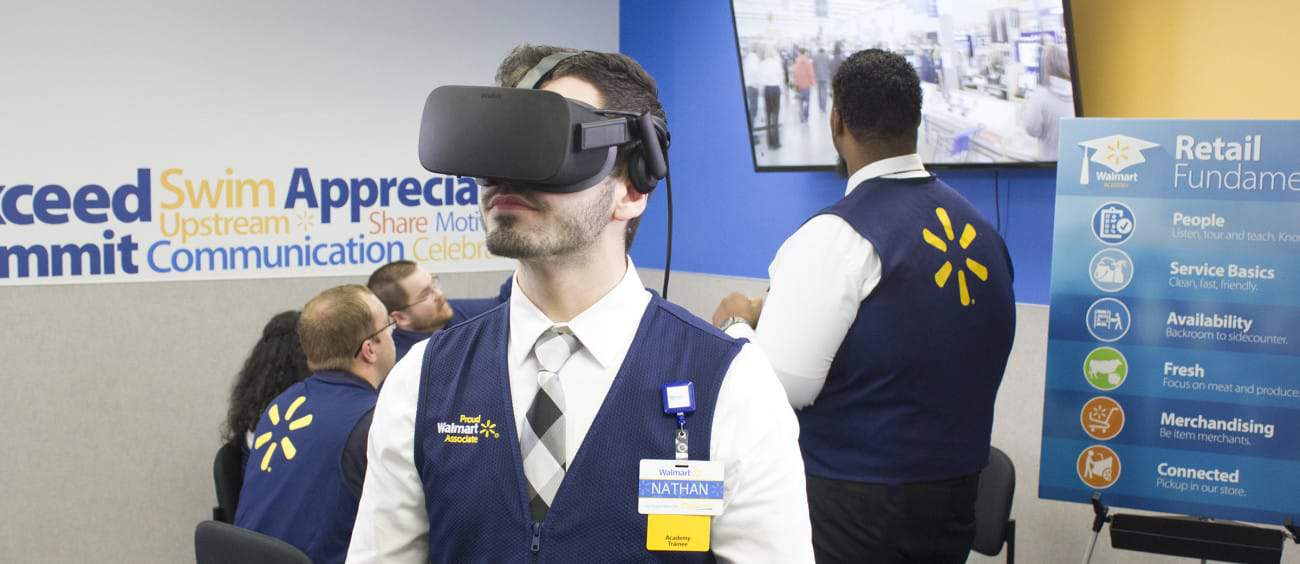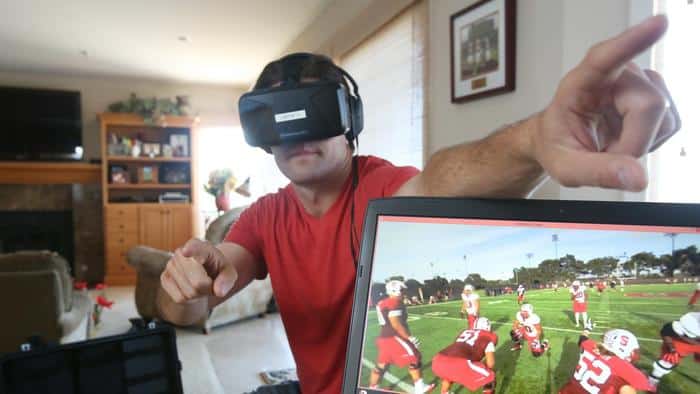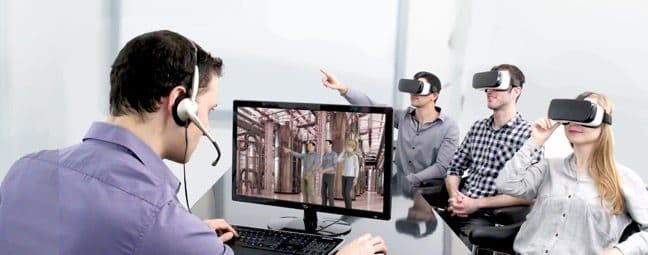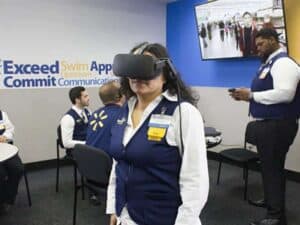VR is already in use in high-risk industries and to train athletes, and now Walmart is rolling out a VR training simulator program for its employees. The immersive technology will help improve employees improve their customer service skills and to prep for events such as – yes, you guessed it – Black Friday.

Here’s the description from TechCrunch:
VR instruction will be used at each of the retailer’s 200 “Walmart Academy” training centers in the U.S. by the end of the year, helping educate the estimated 150,000 employees that will go through the program each year. Each location will have an Oculus Rift headset and gaming PC showcasing a collection of VR training content.
The program was developed by STRIVR, a Palo Alto startup was founded by Torrey Pines former Stanford kicker Derek Belch. It will come as no surprise that Belch did his masters thesis under Jeremy Bailenson who heads Stanford’s Virtual Human Interaction Lab (VHIL). STRIVR has grown quickly and includes a notable client list in sports – the NFL, NHL, PGA and major league baseball. The company has worked with NFL players and college football teams. Indeed, the partnership with Walmart came from the use of VR at the University of Arkansas.

VR training simulator programs
STRIVR of the very few virtual reality companies with a decent revenue stream (somewhere north of $10 million according TechCrunch). While they started out helping quarterbacks, they’ve quickly moved into the corporate training sector. They offer virtual experiences in customer service, operations. safety and security, diversity and inclusion, and crisis management. There are other companies in this space – EON Reality and SkillReal – and you can expect to see a lot more as VR takes off.
In many ways, the desire for VR training simulator programs is further along than the state of the technology we have access to. As Adi Robinson writes in The Verge:
One of the biggest problems for Strivr and Walmart is that high-end VR headsets like the Oculus Rift are expensive and space-consuming. That’s why, for now, only one person will go through the training at a time, while other people watch on a flat screen. Everybody will eventually get to spend time in VR, but only over the course of their two-week training period, with each session lasting between 5 and 20 minutes. “In a perfect world, everybody has a VR headset,” says Belch. “VR is not there yet. Even the mobile devices, there’s a lot of challenges in getting that much hardware out into people’s hands at scale.” So for now, VR is a small, supplemental part of Walmart training.
As with the use of VR in educational institutions and film festivals, it’s hard to scale this up. Too often, it’s one person at a time while others watch.
Walmart will roll out the project to its 200 Walmart Academy centers but not its individual stores. It will cover about 150,000 employees though each will get only a limited amount of time in virtual reality. Most of the training will be watching their colleagues on a display. That’s hardly a revolutionary experience. Still, just the deployment of VR in employee training is a major step in the use of immersive technologies. The project has attracted interest from the automotive and financial services areas.
These types of projects will get easier as VR headsets fall in price later this year. And you can avoid some of the wait time by going with mobile VR. Another workforce training company, Compedia, has an interactive VR platform for multiple users based on Samsung Gear VR devices.
As good virtual reality is now, additional features will push workplace training to the next level. Currently, none of the companies are using haptic vests in their training scenarios (that would seem essential for a Black Friday simulation). And Social VR platforms and AI will turn solitary training experiences into a powerful multiuser learning environments.
As always, watch the secondary uses of the tech developments here. The research being done for Facebook Spaces will go far beyond people hanging out with their friends in virtual environments.

Goodbye PowerPoint and manuals
VR training simulator programs have already made inroads into the oil industry, transportation and healthcare – areas with potentially high fatality rates. But progress has been slower in the corporate world, service industries and education. Walmart marks a new development where virtual experiences will replace PowerPoint presentations and unread manuals. Employees will be able to try out new solutions, learn by making mistakes and ultimately role play with AI driven components without fear of embarrassment.
The use of VR will revolutionize workplace training and transform the concept of lifelong learning. For tomorrow’s employees, the workplace will become their classroom.
Emory Craig is a writer, speaker, and consultant specializing in virtual reality (VR) and generative AI. With a rich background in art, new media, and higher education, he is a sought-after speaker at international conferences. Emory shares unique insights on innovation and collaborates with universities, nonprofits, businesses, and international organizations to develop transformative initiatives in XR, GenAI, and digital ethics. Passionate about harnessing the potential of cutting-edge technologies, he explores the ethical ramifications of blending the real with the virtual, sparking meaningful conversations about the future of human experience in an increasingly interconnected world.


Great article Emory! The company I work for just started offering virtual reality devices for the classroom (https://www.stseducation-us.com/steam/veative/). This is so interesting to see how employers are integrating this into their training programs. Great read and thanks again for sharing it.